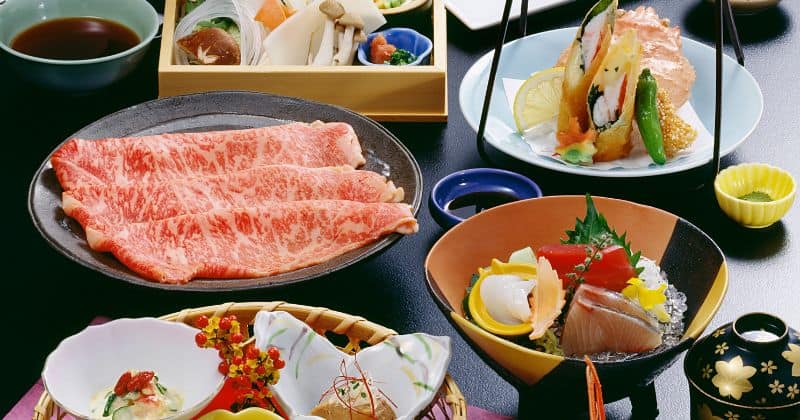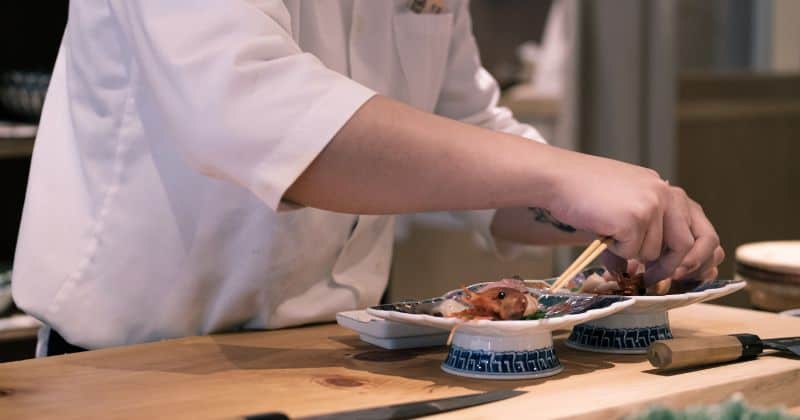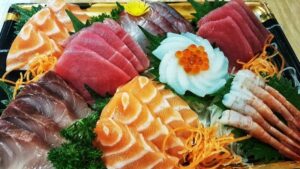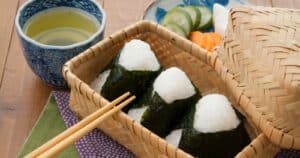Looking to satisfy your cravings for the ever-popular Japanese cuisine? Brace yourself, because there’s more to the high price tags than meets the eye.
Let’s delve into the reasons behind the hefty bills and explore how you can still relish authentic Japanese flavors without emptying your wallet.
From the first sushi roll to the last bite of tempura, every dish on the Japanese menu has its own unique story. We’ll unravel the mysteries behind these high costs, starting with the seasonal availability of key ingredients. Find out how the limited availability of fish and seaweed outside their peak seasons impacts pricing, forcing restaurants to adjust their prices accordingly.
But that’s not all! Imported ingredients play a crucial role in delivering an authentic Japanese culinary experience abroad. Discover how importing these essential ingredients adds to the overall cost of dining out at a Japanese restaurant. And don’t forget the stunning presentation that Japanese food is known for – it takes extra effort and time from skilled chefs, and that too can drive up the price.
We’ll then explore the demanding standards of Japanese consumers when it comes to food quality. Learn why meeting these high expectations often leads to increased prices for certain dishes. And brace yourself for a peek into the world of lengthy, risky, or costly cultivation processes involved in producing some of the most sought-after Japanese ingredients like wasabi, pufferfish, and mangoes.
But fear not, dear reader! While Japanese cuisine can be costly, we’ll reveal some insider tips on where to find delicious yet affordable options in Japan. Get ready to embark on a culinary journey that satisfies both your taste buds and your budget.
Traditional Ingredients and Sourcing: Premium quality comes first
Traditional Japanese cuisine is renowned for its premium quality ingredients, and the sourcing of these ingredients is of utmost importance. Suppliers go to great lengths to ensure authenticity and high quality, offering customers a taste of Japan’s culinary excellence. Here are some ways that traditional Japanese ingredients are sourced:
- Direct import from Japan: Many suppliers specialize in importing premium Japanese ingredients directly from Japan. This ensures that the ingredients are genuine and maintain their original quality. By bypassing intermediaries, these suppliers can guarantee the authenticity and freshness of the ingredients they offer.
- Local suppliers: While some Japanese restaurants and suppliers may source their ingredients locally, they still prioritize high-quality ingredients. This includes fresh seafood, produce, and other specialty items. The emphasis on premium quality remains consistent, regardless of whether the ingredients are imported or locally sourced.
- Online suppliers: The advent of online retailers, such as SushiSushi, has made it convenient for both professional kitchens and home cooks to access a wide range of premium Japanese ingredients. These online platforms offer authentic ingredients, cookware, and tableware, eliminating the need to travel to Japan. This accessibility ensures that the quality of traditional Japanese cuisine can be enjoyed worldwide.
- Artisanal producers: Some suppliers specialize in sourcing traditional Japanese ingredients from artisanal producers. These producers employ traditional techniques to create ingredients such as perfectly roasted sesame seeds, hand-harvested konbu, and rice vinegar made by companies that grow their own rice. This commitment to traditional methods and craftsmanship enhances the overall quality of the ingredients.
Exquisite Culinary Skills: Years of training and expertise

Japanese cuisine is renowned for its exquisite culinary skills, which are the result of years of training and expertise. Chefs undergo rigorous training to master the techniques, ingredients, and presentation that define Japanese cooking. Here are a few key ways in which these skills are developed:
- Professional training courses: Aspiring chefs can enroll in professional training courses that specialize in Japanese cuisine. The Japan Culinary Institute, for instance, offers comprehensive programs of varying durations, ranging from 7 to 22 weeks. These courses cover essential topics like knife skills, seafood preparation techniques, and the rich food culture associated with Japanese cooking.
- Kaiseki training: Kaiseki is a traditional multi-course Japanese dinner that requires extensive training and knowledge of Japanese philosophy and arts. Chefs who specialize in kaiseki undergo years of study to understand the intricate balance of flavors, textures, and aesthetics that define this refined dining experience.
- Online certificate programs: For those looking for flexibility and affordability, online certificate programs provide an accessible way to learn Japanese culinary skills. These programs cover various aspects of Japanese cuisine, including food culture, seasonings, and seafood preparation techniques. They allow aspiring chefs to gain expertise at their own pace and convenience.
Mastering Japanese culinary skills is not just about theoretical knowledge but also about practice and experience. Hands-on programs, such as those offered by the Department of Japanese Culinary Cooking and the Japan Culinary Institute, provide students with opportunities to learn from experienced chefs. Through hands-on practice, students can refine their skills and learn the intricate details that make Japanese cuisine so exceptional.
Artistic Presentation and Aesthetics: Beautiful dishes that require time and precision
Japanese cuisine is renowned for its artistic presentation and aesthetics. The meticulous attention to detail and precision that goes into creating visually stunning dishes is truly remarkable. Here are some key factors that contribute to the beautiful presentation of Japanese cuisine:
- Minimalism: Japanese cuisine follows the principle of “less is more” when it comes to presentation. By arranging dishes with a minimal number of elements and utilizing negative space, a sense of balance and harmony is achieved. This minimalist approach allows each ingredient to shine and creates a visually pleasing composition.
- Beauty: The presentation of Japanese cuisine focuses on creating beauty through the use of color, texture, and shape. Chefs carefully select ingredients to incorporate a variety of colors and textures, resulting in visually striking dishes. Additionally, food is often arranged in a way that mimics natural landscapes, such as mountains or rivers, evoking a sense of serenity and aesthetic pleasure.
- Uniqueness: Japanese cuisine often surprises and delights diners with unique and unexpected presentation elements. Edible flowers, intricate garnishes, and creative plating techniques are commonly used to add an element of surprise and elevate the dining experience. These artistic touches not only make the dishes visually appealing but also reflect the creativity and skill of the chefs.
- Calculated asymmetry: Japanese cuisine embraces the concept of calculated asymmetry in its presentation. Instead of striving for perfect symmetry, chefs intentionally arrange food in a way that is visually interesting and creates a harmonious balance. This deliberate imperfection adds depth and intrigue to the dishes, making them visually dynamic and engaging.
- Precision: Achieving the perfect presentation in Japanese cuisine requires a high level of precision and attention to detail. Chefs invest significant time and effort in meticulously placing each element on the plate. From arranging delicate slices of sashimi to positioning decorative garnishes, every aspect of the presentation is carefully executed to ensure a visually stunning outcome.
Limited Access to Local Produce: Geographical challenges affect availability
Limited access to local produce in Japan is a significant challenge that affects the availability of certain ingredients in Japanese cuisine. This issue can be attributed to several factors:
- Changing consumer preferences: There has been a shift in Japanese consumers’ preferences towards non-traditional foods like pasta and bread made from wheat. As a result, the demand for some traditional Japanese ingredients has decreased.
- Dire state of Japanese agriculture: The state of Japanese agriculture is another key factor contributing to the limited access to local produce. Many farmers in Japan are aging and retiring, and younger generations are not inclined to take up farming as a profession. Consequently, there has been a decrease in the amount of locally grown produce available.
- Lack of quality to satisfy Japanese demand: Japan has strict quality standards when it comes to sourcing ingredients for their cuisine. When searching for new import sources, only a limited number of exporting countries can meet these high-quality standards, making it difficult to find suitable ingredients that meet the standards of Japanese cuisine.
- Seafood availability: Many Japanese dishes prominently feature seafood, which can be expensive to obtain and is not stored for a long time. This can limit the availability of some seafood-based dishes, further contributing to the challenge of limited access to local produce.
Unique and Seasonal Seafood: Cost and rarity contribute to the high prices
Japanese cuisine is renowned for its unique and seasonal seafood, which often comes with a high price tag. This can be attributed to several factors:
- Seasonality: Many Japanese dishes rely on fish and seaweed that are only available during specific seasons. This limited availability drives up the cost of these ingredients as they may need to be sourced from other regions or even imported. As a result, the price of Japanese food can be affected by the fluctuating availability of these seasonal seafood items.
- Cultivation processes: Certain Japanese seafood, such as bluefin tuna, pufferfish, and snow crab, have lengthy, risky, or costly cultivation processes. For example, bluefin tuna requires extensive care and feeding over several years before it reaches a desirable size for consumption. These factors contribute to the higher production costs, making these seafood items more expensive to purchase.
- Freshness: Japanese seafood is known for its freshness, as it is often served raw or lightly cooked. To maintain this level of freshness, the seafood needs to be caught and served quickly. This translates to a shorter supply chain, which can increase the cost of logistics and transportation. The emphasis on freshness also means that any delays or mishandling along the way can result in a significant loss of quality, further impacting the price.
Additionally, it is worth mentioning that in order to run an authentic Japanese restaurant overseas, owners may need to pay for the importation of seafood. This adds an extra layer of expense, as the seafood needs to be shipped from Japan to maintain its authenticity. Importation costs, customs fees, and transportation fees all contribute to the higher prices of Japanese food in foreign markets.
High Standards of Hygiene and Safety: Strict regulations come with a cost
In Japan, the high standards of hygiene and safety in Japanese cuisine come with a cost. This is due to the strict regulations and standards that are in place to ensure food safety and protect public health. Let’s take a closer look at some of these regulations and how they contribute to the higher cost of Japanese food.
- Food Sanitation Law: The Food Sanitation Law is a primary law that governs food safety in Japan. It lays down regulations and sets food safety standards for various aspects including foods, food additives, and pesticides. Compliance with these regulations requires additional resources and investments from food establishments, leading to higher costs.
- Food Safety Basic Law: The Food Safety Basic Law, enacted in 2003, aims to ensure the safety of food and prevent health hazards caused by food. This law has led to the implementation of stringent safety measures throughout the food production and distribution process, increasing expenses for businesses.
- JFS Standards: The Japan Food Safety Management Association operates the JFS Standards, a certification and conformity assessment standard for food safety management. These standards cover various aspects such as food safety management systems, food hygiene, and food labeling. Adhering to these standards often involves additional expenses for businesses, as they have to invest in training, equipment, and monitoring to maintain compliance.
In addition to these specific regulations and standards, the overall culture of high hygiene and safety standards in Japan also contributes to the increased costs of Japanese food. This includes strict quality control measures, regular inspections, and a focus on sourcing high-quality and safe ingredients.
Authentic Dining Experience: Immersive ambiance and attention to detail

Authentic Japanese dining experiences stand out for their immersive ambiance and attention to detail. The minimalistic approach to decor creates a calming atmosphere with natural wood and stone elements.
Additionally, the Omakase dining experience allows guests to trust the chef to curate a personalized meal, showcasing their creativity and expertise.
Kaiseki, a traditional Japanese dining experience, offers meticulously prepared, multiple-course meals with fresh seasonal ingredients and beautiful presentation. Culinary classes in a traditional setting provide an immersive experience where guests can learn about Japanese cuisine and culture.
Lastly, Japanese cuisine treats food presentation as an art form, ensuring each dish is visually stunning through careful attention to color, texture, shape, and unexpected presentation elements.
Export Costs and Import Taxes: Overcoming logistical hurdles
Exporting and importing goods in Japanese cuisine can be a challenging task due to various factors that contribute to high costs and logistical hurdles. Let’s explore these hurdles and how to overcome them.
Firstly, Japan’s import tax rates are generally low, which is favorable for the landed cost of goods. However, import duties and taxes are still levied on shipments valued above JPY 10,000. This can significantly add to the cost of importing goods. To overcome this challenge, importers need to be aware of the tax regulations and factor them into their cost calculations.
Secondly, Japan assesses tariff duties based on the value of the goods or specific rates. While the average applied tariff rate in Japan is one of the lowest in the world, certain products like agriculture products may have higher tariffs. Importers should carefully consider these tariffs and explore ways to minimize their impact, such as seeking tariff exemptions or finding alternative sourcing options.
Another hurdle in exporting and importing goods is the compliance with regulations. Japan has strict requirements for packing, documentation, marking, and labeling, which are crucial for smooth customs clearance. Failure to comply with these regulations can result in delays and additional costs. To overcome this challenge, exporters and importers should thoroughly understand the regulatory requirements and ensure that all necessary paperwork and labeling are in order.
Furthermore, shipping and transporting goods can also contribute to the overall cost. The availability and accessibility of shipping options can vary depending on the location and type of goods being shipped. To overcome this hurdle, it is important to research and choose reliable and cost-effective shipping methods that suit the specific requirements of the goods.
In conclusion, exporting and importing goods in Japanese cuisine can be costly and challenging due to factors such as import taxes, tariffs, regulations, and logistical hurdles. However, by understanding and carefully navigating these obstacles, businesses can overcome the logistics and ensure a smooth and cost-effective import and export process.





